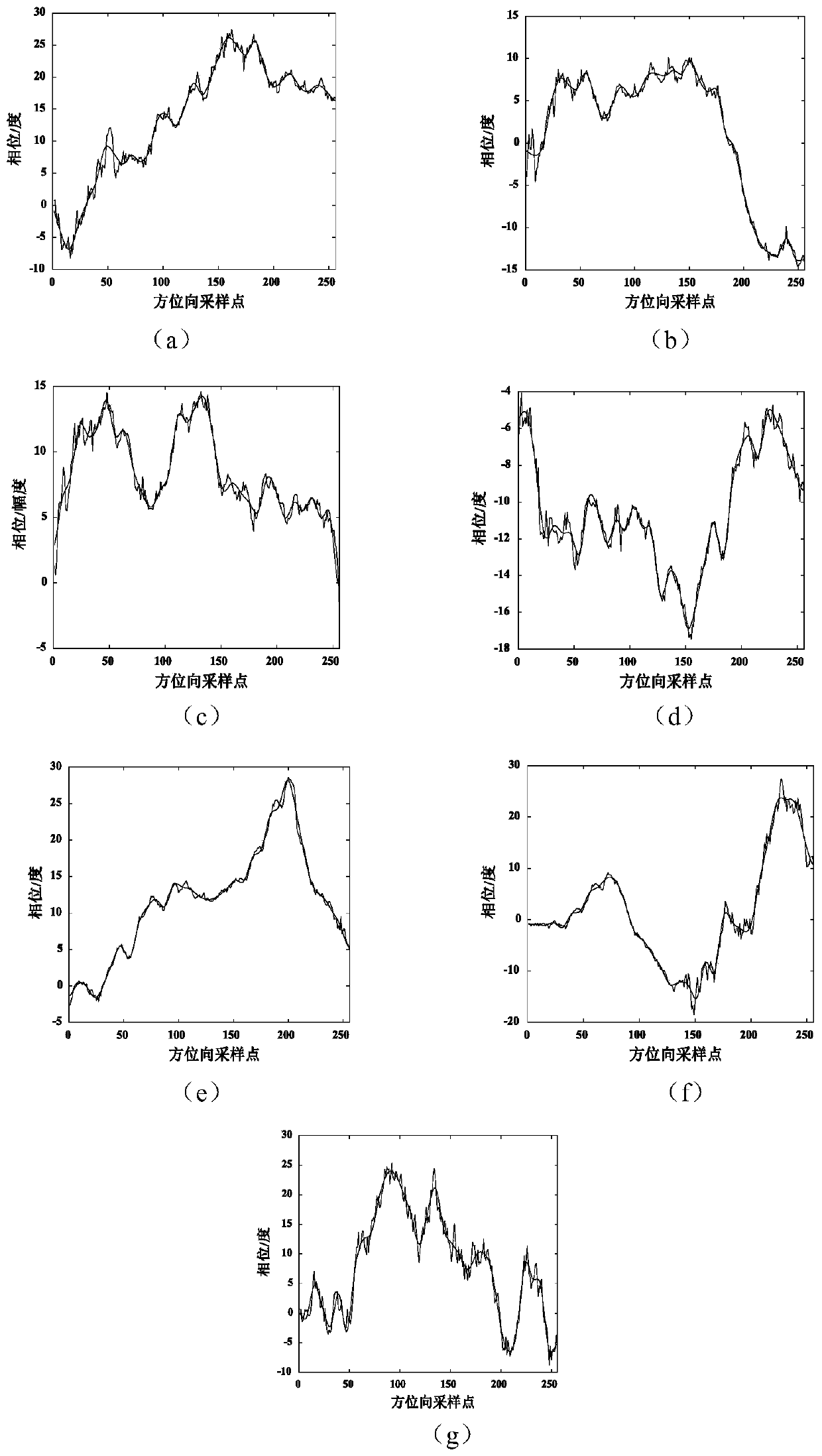SAL (synthetic aperture ladar) full-aperture imaging method based on MEA (minimum entropy autofocus) and deramp
An imaging method and full-aperture technology, which can be used in the re-radiation of electromagnetic waves, the use of re-radiation, measurement devices, etc., can solve the problems of unsatisfactory imaging effect and data loss, and achieve improved data utilization, strong robustness, and resolution. high rate effect
- Summary
- Abstract
- Description
- Claims
- Application Information
AI Technical Summary
Problems solved by technology
Method used
Image
Examples
Embodiment 1
[0029] Since the synthetic aperture lidar is a synthetic aperture imaging technology working in the laser band, and because the working wavelength of the SAL is relatively short, for the airborne SAL, the vibration amplitude of the carrier aircraft is dozens of times of its wavelength, which will be introduced during the data acquisition process. For high-frequency or large-scale phase errors, it is difficult for traditional inertial navigation systems to achieve laser wavelength-level positioning accuracy. For this reason, the present invention has innovated and proposed a full-aperture self-focusing imaging algorithm. See figure 1 , including the following steps:
[0030] Step 1, generate the initial data matrix of synthetic aperture lidar imaging: for the measured SAL echo image, after data conversion, input the complex matrix of the converted SAL echo image, and generate the initial data matrix of SAL imaging, which is called a complete data block, It is waiting for the al...
Embodiment 2
[0040] The full-aperture imaging method based on the MEA algorithm is the same as in Embodiment 1, and the process of obtaining the SAL image echo data in step 2 includes:
[0041] A synthetic aperture lidar emits a chirp signal:
[0042]
[0043] Among them, rect( ) is a rectangular window function, For fast time, T p is the duration of the transmitted pulse, and γ is the modulation frequency.
[0044] The transmitted signal is reflected by the ground target point and then collected back to obtain the echo signal. Compared with the original transmitted signal, the echo signal has a certain delay. (R t is the instantaneous slant distance from the target to the aircraft, c is the electromagnetic wave propagation speed, which is equal to the speed of light), then the echo signal at this time is expressed as:
[0045]
[0046] where t m Indicates the azimuth slowing time, that is, the flight time of the carrier aircraft, t m It is reflected in the echo delay τ (if t...
Embodiment 3
[0048] The full-aperture imaging method based on the MEA algorithm is the same as that in Embodiment 1-2, and the compensation process of the focusing phase in the azimuth direction in step 3 includes:
[0049] 3a) Construct the matched filter function:
[0050] Range pulse pressure data at zero Doppler time t d The target echo for is:
[0051] the s r (t m )=exp(jπγ m (t m -t d ) 2 ) (3)
[0052] Among them, γ m is the azimuth modulation frequency;
[0053] The matched filter function is:
[0054]
[0055] 3b) Perform deramp, and the obtained signal is multiplied by the conjugate function of the target echo and the matched filter function:
[0056]
[0057] Among them, h * dr (t m ) means h dr (t m ) conjugate. The first exponential term of the above formula is a constant phase, which is related to the zero Doppler time t d proportional to the square of ; the second exponential term is γ m t d The complex sine wave (single frequency wave);
[0058] ...
PUM
 Login to View More
Login to View More Abstract
Description
Claims
Application Information
 Login to View More
Login to View More - R&D
- Intellectual Property
- Life Sciences
- Materials
- Tech Scout
- Unparalleled Data Quality
- Higher Quality Content
- 60% Fewer Hallucinations
Browse by: Latest US Patents, China's latest patents, Technical Efficacy Thesaurus, Application Domain, Technology Topic, Popular Technical Reports.
© 2025 PatSnap. All rights reserved.Legal|Privacy policy|Modern Slavery Act Transparency Statement|Sitemap|About US| Contact US: help@patsnap.com



